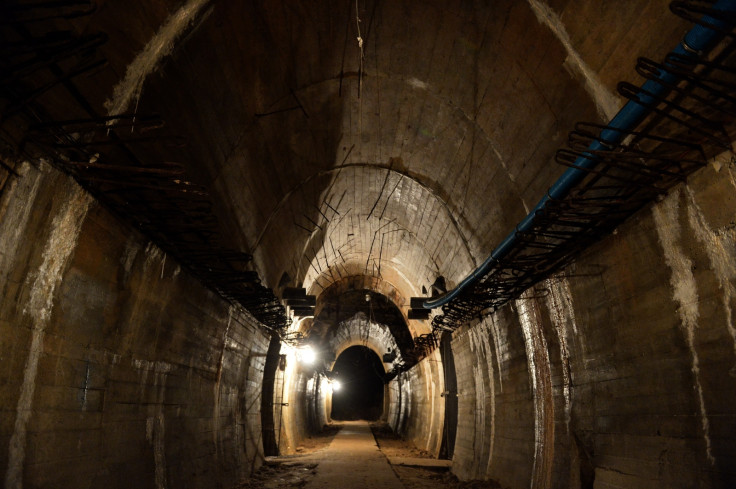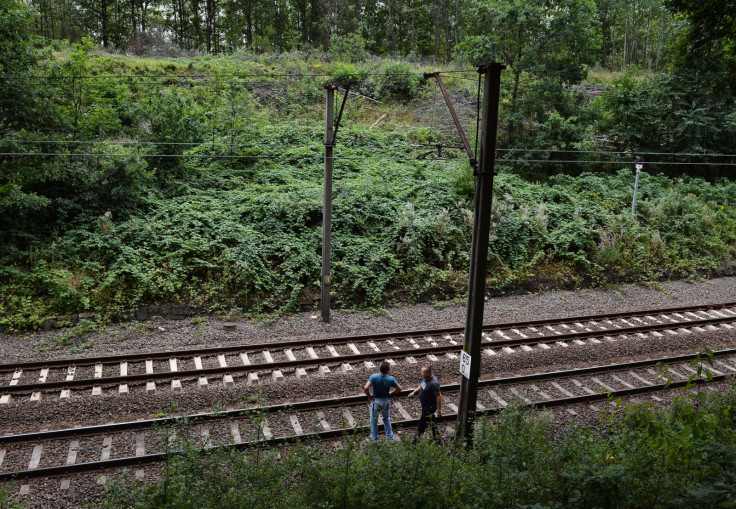Poland: What secrets could be buried in the Nazi 'gold train'?

Treasure hunters are flocking to south-west Poland to search for a Nazi train said to be filled with gold and other valuables, which according to legend, has been concealed underground near the city of Wałbrzych since January 1945. Since two men recently came forward with information reportedly detailing the whereabouts of the long-lost train, excitement has been mounting over the potential riches hidden inside.
The legend of the Nazi gold train has intrigued Poles for decades. According to folklore, Nazi authorities in the Lower Silesia capital of Breslau – now Wrocław – collected several tonnes of gold bullion, artwork and gems from the city's residents as the Red Army advanced westwards towards the end of the Second World War.
It is said the gold was then loaded on to a train to take it deeper into Third Reich territory. The train was then supposedly driven into a system of tunnels beneath the Owl Mountains, but disappeared when the Allies gave Lower Silesia to Poland in compensation for the larger area of territory lost in the east to the Soviet Union.
Others believe the train hold the missing Amber Room of the Tsars. The Amber Room was stolen by the Nazis from a Tsarist palace outside St Petersburg during their invasion of the Soviet Union in 1941. Crafted entirely out of amber, gold and precious stones, the room made of numerous panels was a masterpiece of baroque art and widely regarded as one of the world's most important art treasures.
Meanwhile, The head of the World Jewish Congress, Robert Singer, believes that the gold, gems and artworks said to be on board the Nazi train may have belonged to the Jews which were killed in concentration camps, and therefore "should be transferred to their heirs." Wałbrzych is 100 miles from the principal Nazi death camp complex of Auschwitz.

Some say the train, loaded with valuables and armaments, is hidden near the 13<sup>th century Ksiaz castle located about 3km from Wałbrzych. Others say it is in the hills near the town of Piechowice.
During Poland's Communist era, the Polish army carried out fruitless searches for the train but no evidence was ever found. It is said to be located next to a 4km stretch of track on Polish State Railways' Wrocław-Wałbrzych line in an abandoned mountain railroad tunnel – but historians say it never existed. The alleged site is reportedly between the 61<sup>st and 65<sup>th kilometre of the track.
In August 2015, two men came forward with information allegedly obtained via a deathbed confession given by a person who helped bury the train towards the end of the war. Shortly after, their claim was given credibility by Polish deputy culture minister Piotr Zuchowski who said images taken via ground-penetrating radar revealed contours of a train. Zuchowski said the evidence was "exceptional" and left him "99% convinced" the train was buried near Wałbrzych, but warned it may be booby-trapped or contain unstable Second World War explosives.
Treasure hunters have since converged on the area, hoping to uncover the Nazi loot concealed beneath the woodland. Many of the hunters are locals armed with metal detectors, but it has been reported German tourists are also on the lookout in the area. Authorities have said only pieces of rusting metal have been found so far.
It is quite possible the Nazi gold train is folklore and nothing more. Intriguingly, though, Nazi Germany did build a complex system of tunnels in the area between 1943 and 1945. Project Riese, the code name for the construction project, consisted of seven underground structures located in the Owl Mountains beneath Ksiaz castle.

Although none of the tunnels were finished and the purpose of their construction is unknown because of a lack of documentation, it has been suggested they were to be used as underground factories or as a HQ for Hitler himself.
More than 9km of tunnels were dug by forced labourers, prisoners of war or concentration camp inmates, many of whom died as a result of disease, starvation and backbreaking labour. Only some of the tunnels were reinforced with concrete and some are now open as tourist attractions, offering a snapshot of Nazi Germany's mysterious construction project.
Polish authorities have sectioned off part of the wooded area to prevent accidents, after a local was nearly hit by a train while trying to take a selfie on the tracks. "A few hectares of land are now being secured," provincial governor Tomasz Smolarz told AP. "People have been barred from the woods surrounding the site."
Magdalena Woch, director of culture at the Ksiaz castle, told reporters more than one train may be buried in the Polish hillside. "There is a story that in 1945 there were three trains which came into the town and have never been found. The gold may not be in the train that has been found but in one of these better secured military trains.
"It is possible there are more trains in Wałbrzych. There are discrepancies between maps of the area from the 1920s and the 1940s which suggests there are tunnels under the town which have never been found. Up to 1947, the Soviets were here and we do not know what they found."
© Copyright IBTimes 2025. All rights reserved.





















